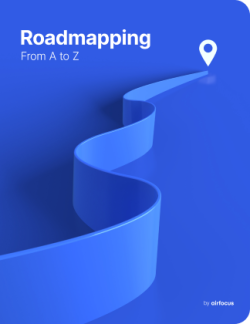Lean Roadmap
What is a lean roadmap?
Lean roadmap definition
Lean roadmaps are used to help communicate priorities and timeframes. The lean roadmap sets out upcoming activities with a loose timeframe, referred to as time horizons. It’s commonly used by agile teams in fast-paced environments that have to deal with constantly changing priorities, as it enables easy communication about any changes between the team and stakeholders. Lean roadmaps are sometimes also referred to as Now, Next, Later roadmaps.
Benefits of lean roadmaps
While a lean roadmap is not a concrete development plan, it offers a strong range of benefits for agile teams.
1. Provides visibility
Lean roadmaps help increase awareness and allow you to explain the plan for your product vision.
2. Aligns the team
The lean roadmap puts your plan into the simplest terms, so everyone who sees it will quickly understand which tasks are a priority.
3. Creates a predictable schedule
There are many parties involved in a project after the development stage. These parties need to have some idea of when certain tasks will be completed. For example, the marketing team will need to know when the product is approaching completion so they can start planning their campaigns. Lean roadmaps help forecast when things like that can start.
Principles of lean roadmapping
Here are some of the main principles of lean roadmapping.
Connects with the product vision
Lean roadmapping aligns closely with the overarching product vision, ensuring that every step and decision is made in harmony with the long-term strategic goals of the product or organization. This connection ensures that efforts are cohesive and contribute to the overall mission.
Focuses on outcomes, not outputs
This principle encourages teams to measure success based on the impact of their work on users and the market, rather than the sheer volume of work completed. Rather than concentrating on completing tasks or producing features, lean roadmapping prioritizes meaningful outcomes that create value for users and the business.
While it’s good to keep track of outputs — after all, outputs are what make the product — focusing on outcomes will help to increase customer satisfaction, sales, and product usage.
User-centric approach
Lean roadmaps emphasize user needs, pain points, and preferences, which can then help guide decision-making. Staying focused on your users helps in creating products that offer maximum value, and truly resonate with the intended audience.
Follows agile principles
Lean roadmaps are perfect for agile teams because they encourage flexibility, adaptability, and iterative development. Lean roadmaps embrace breaking down work into smaller, manageable increments and regularly reassessing priorities to see if changes are needed during development. This approach enhances responsiveness and reduces the risk of building the wrong thing.
General FAQ

Glossary categories
Build great roadmaps

Experience the new way of doing product management








